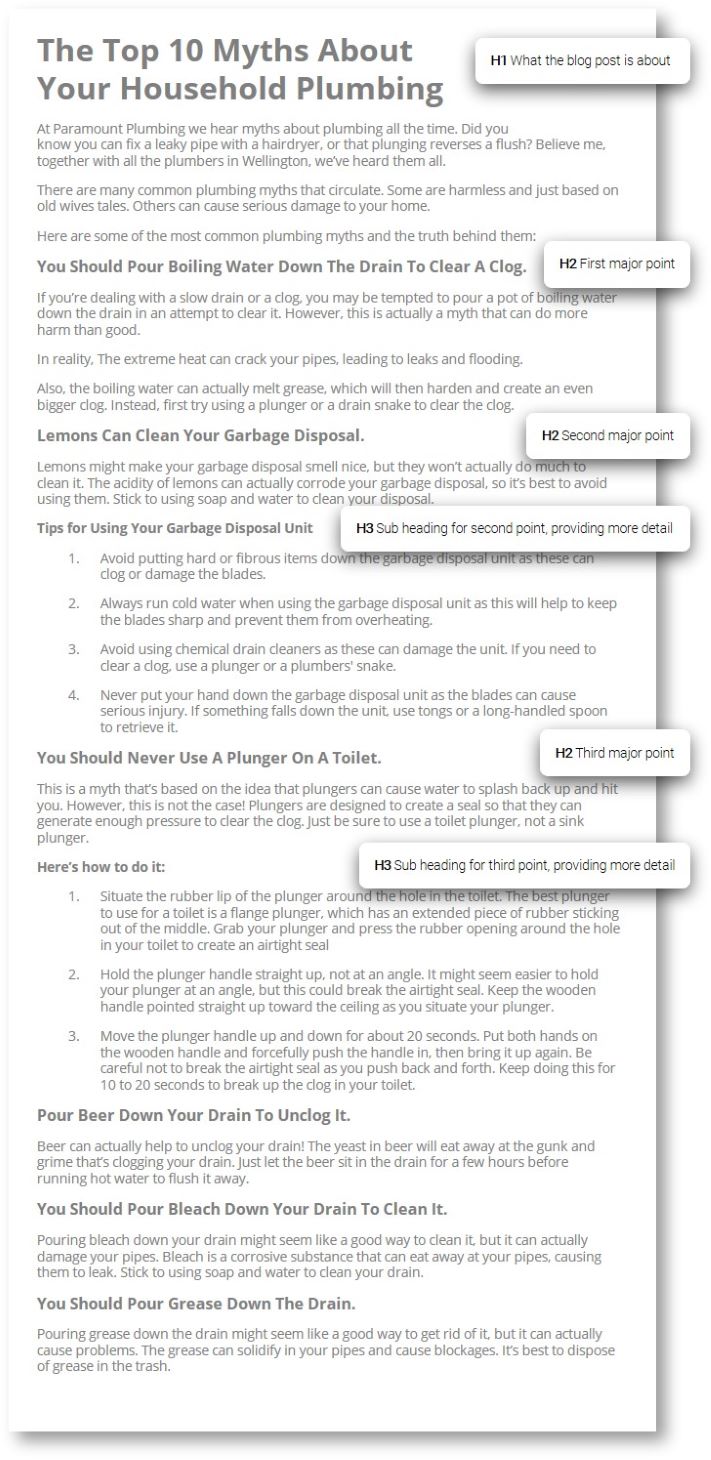If you’re serious about ranking in Google search, then you need to use headings to structure your content. Headings help Google understand the structure of your content and give it a better “snapshot” of what your webpage or blog is about.
Google crawls your content from top to bottom. By using headings, you’re essentially creating a table of contents for Google, which helps it understand the hierarchy and structure of your content.
In addition, headings act as signposts for readers, making it easy for them to scan your content and find the information they’re looking for. That’s why it’s important to use headings judiciously and only when they add value to your article.
In this post, we’ll cover what headings are, how Google uses them, and how to use headings for SEO. By the end, you’ll have a better understanding of how to optimize your headings to improve your search rankings.
What are Headings?
Headings are HTML tags that are used to indicate the hierarchy of your content. The most important heading is the <h1> tag, which is used for the title of your page or post.
The <h2> tag is used for subheadings, and the <h3> tag is used for sub-subheadings, and so on.
Let’s look at two examples, one for a homepage and the other for a blog

On Guard Security Alarms’ homepage using headings

Paramount Plumbing Wellington’s blog post using headings
As you can see, the <h1> tag is used for the title of the article, the <h2> tag is used for the main section headings, and the <h3> tag is used for the sub-headings.
How Google Uses Headings
Google uses headings to understand the structure of your content and to give it a better “snapshot” of what your article is about.
In addition, headings also help Google determine the topic of your article and match it with the searcher’s intent.
Headings and Rankings
Google has said that headings are not a ranking factor. However, there is some evidence that Google does use headings as a weak signal in their ranking algorithm.
In addition, headings can influence your click-through rate (CTR) from the search results, which is a ranking factor.
Headings and Click-Through Rate
Your CTR from the search results is influenced by the title of your article and the description that appears beneath it.
The title is the most important factor, but the description also plays a role. If your title and description are not compelling, people will not click on your result.
Interestingly, a study by Content Marketing Institute showed that headlines with 6-13 words and a colon had the highest CTR
They help you rank for featured snippets
Featured snippets are a coveted spot in SERPs, as they appear above the organic results. By optimizing your headings, you increase your chances of ranking for featured snippets.
How to Use Headings for SEO
Now that you know how Google uses headings, let’s look at how you can use headings to improve your SEO.
Use Heading Tags Judiciously
The first rule of using headings is to use them judiciously. That means using headings only when they add value to your article, and make sure they fit in naturally with the rest of your content.
You should only use one h1 tag per page, as it represents the title of your page.
Optimize Your Headings for Keywords
The second rule of using headings is to optimize your headings for keywords. That means using keywords judiciously in your headings to help Google understand what your article is about.
If you stuff your headings with keywords, Google will penalize you. In addition, using too many headings can make your content look like spam.
A good rule of thumb is to use one <h1> tag, one or two <h2> tags, and a few <h3> tags if you need them.
Make Your Headings Readable
The third rule of using headings is to make your headings readable. That means using clear and concise headings that are easy to scan.
Your headings should be descriptive and give the reader a good idea of what the section is about. However, you should not go overboard and make your headings too long.
A good rule of thumb is to keep your headings under 60 characters.
Use Different Types of Headings
When creating your headings, mix things up and use different types. For example, you can use questions, numbers, and brackets.
Avoid Duplicate Headings
When using headings, make sure they’re unique. Avoid using the same heading for multiple pages, as it will not only confuse Google but also readers.
Conclusion
Headings are important for SEO because they help Google understand the structure of your content and match it with the searcher’s intent. In addition, headings can influence your CTR from the search results.
When using headings, you should use them judiciously and only when they add value to your article. In addition, you should optimize your headings for keywords and make them readable.
